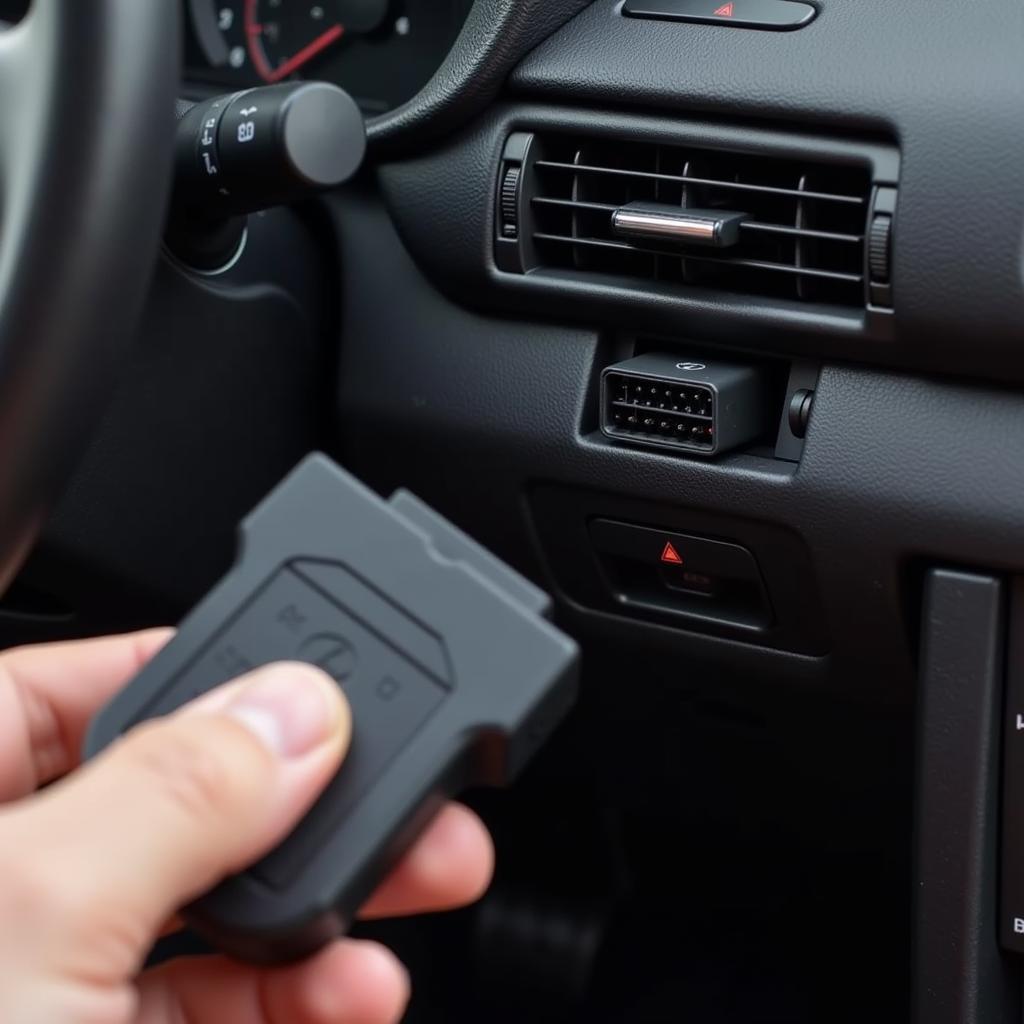If you’re a Peugeot 406 owner and have encountered the dreaded “low brake fluid” warning, this guide is for you. We’ll explore the causes, solutions, and preventive measures for this critical issue, ensuring your safety and optimal vehicle performance. Addressing a peugeot 406 low brake fluid warning is crucial for maintaining a safe driving experience.
Understanding the Peugeot 406 Low Brake Fluid Warning
The brake fluid warning light is a crucial safety feature, alerting you to a potential issue within your Peugeot 406’s braking system. Ignoring this warning can lead to significant safety risks, potentially resulting in brake failure. Understanding why this warning appears is the first step to resolving the problem and ensuring safe driving.
Brake fluid is the lifeblood of your car’s hydraulic braking system. It transmits the force from your foot on the brake pedal to the brake calipers, which then clamp down on the rotors to stop the wheels. If the fluid level drops too low, air can enter the system, leading to a spongy brake pedal feel and reduced braking effectiveness.
Several factors can trigger the low brake fluid warning in your Peugeot 406. Worn brake pads are a common culprit. As the pads wear down, the brake calipers need to extend further to apply pressure to the rotors. This extension requires more brake fluid, potentially triggering the warning light. A leak within the braking system, whether from a damaged brake line, caliper, or master cylinder, is another serious cause of low brake fluid. Finally, although less common, internal wear within components of the braking system can also cause fluid loss.
peugeot 406 brake pad warning light
Diagnosing the Cause of Low Brake Fluid
Identifying the root cause of the low brake fluid warning requires careful inspection. First, check the brake fluid reservoir visually. It’s usually a translucent plastic container located near the firewall in the engine compartment. The reservoir should have minimum and maximum level markings. If the fluid level is below the minimum mark, it confirms low brake fluid. However, this doesn’t tell you why the level is low.
Next, visually inspect the brake lines, calipers, and wheel cylinders for any signs of leaks. Look for wet spots, drips, or corrosion on these components. A leak indicates a serious problem that requires immediate professional attention. If you don’t see any obvious leaks, check the brake pads for wear. Excessively worn brake pads are often the reason for the low fluid warning and will require replacement.
Solutions and Repairs
If you’ve identified worn brake pads as the cause, replacing them is necessary. If a leak is suspected, it’s crucial to take your Peugeot 406 to a qualified mechanic for diagnosis and repair. Attempting to fix a brake leak yourself can be dangerous and could lead to further damage. A professional mechanic can pinpoint the source of the leak, repair or replace the damaged component, and bleed the brake system to remove any trapped air.
Topping off the brake fluid is a temporary measure if the level is slightly low, but it doesn’t address the underlying issue. If the warning light reappears shortly after adding fluid, it strongly suggests a leak or worn brake components requiring professional attention.
Preventive Measures and Regular Maintenance
Regular maintenance plays a vital role in preventing brake issues. Schedule routine brake inspections with a qualified mechanic. They can assess the condition of your brake pads, rotors, lines, and calipers, identifying potential problems before they become serious. Adhering to the recommended brake fluid change intervals outlined in your Peugeot 406’s owner’s manual is essential to maintain optimal brake performance.
“Regular brake checks are not just about safety,” says John Miller, ASE Certified Master Technician. “They can also save you money in the long run by preventing more costly repairs down the road.”
Remote Diagnostics and Software Solutions
In some cases, remote diagnostics and software solutions can be utilized to identify certain brake-related issues. While these technologies are evolving in the automotive industry, they can’t replace a physical inspection by a qualified mechanic, especially when dealing with critical safety components like brakes.
Conclusion
Addressing the peugeot 406 low brake fluid warning promptly is essential for maintaining your safety on the road. Whether it’s due to worn brake pads or a more serious leak, understanding the potential causes and taking appropriate action can prevent potential brake failure. Don’t ignore this vital warning sign – prioritize your safety and ensure your Peugeot 406’s braking system is in optimal condition. Regular maintenance and professional inspections are key to preventing brake problems and ensuring a safe driving experience. “A little preventative maintenance goes a long way in keeping your brakes in top shape,” adds Miller. “It’s a small investment that pays off big in terms of safety and peace of mind.”
FAQ
- What does the low brake fluid warning light mean? It indicates a potential issue with your Peugeot 406’s braking system, such as low fluid level, a leak, or worn brake components.
- Is it safe to drive with the low brake fluid warning light on? No, it’s highly unsafe and could lead to brake failure. Have your car inspected immediately.
- What are the common causes of low brake fluid? Worn brake pads, leaks in the braking system, or internal component wear.
- How can I check my brake fluid level? Locate the brake fluid reservoir in the engine compartment and check the fluid level against the minimum and maximum markings.
- Can I top off the brake fluid myself? You can add fluid if the level is slightly low, but this is a temporary solution. Address the underlying issue promptly.
- How often should I have my brakes inspected? Follow the recommended maintenance schedule in your owner’s manual.
- Can remote diagnostics fix brake problems? While helpful for identifying some issues, they can’t replace a physical inspection by a qualified mechanic.

